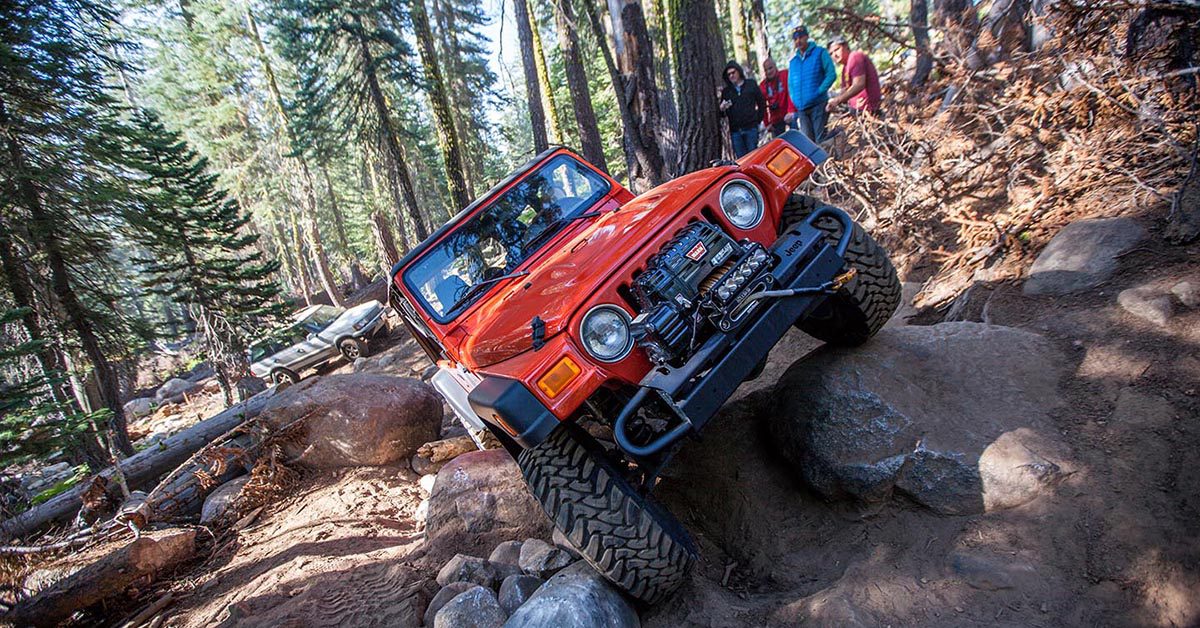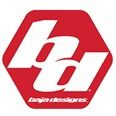

The greatest thing about driving a Jeep isn’t just the ability to go anywhere, but the freedom of knowing that you can go anywhere, even if you are just on your way to work. The bad part about owning a Jeep? While those narrow dimensions make Wranglers perfectly suited for tight, technical trails, they also make it a challenge to pack everything you need inside your Jeep for longer trips into the backcountry, or even for just daily driving. While care should be taken to only bring what is necessary on longer trips and packing heavy items securely and low inside the vehicle, there are some items that you should have with you at all times. These items don’t take up much space and fortunately they won’t break the bank either. These are our Top Ten items to have in your Jeep at all times. None of them cost over $100, and several of them are under $20, so you have no excuse not to have these items with you at all times. Be prepared for adventure, wherever you may find it.

10) Insect Repellent
Getting outside means being exposed to the elements, and in many environments that includes bugs. Some are harmless, some are annoying, and some want to suck your blood. Literally. Insect repellent will keep them at bay. We like the natural kind since it doesn’t feel as greasy on our skin, but sometimes when the ‘skeeters are really thick there is no replacement for a healthy dose of DEET.

9) Zip Ties
GZip ties (or cable ties) are one of the least expensive items on this list, yet they serve so many purposes. They can be used to secure sway bar end links out of harm’s way, keep a radiator hose out of the fan, or bundle wires together. You can even put one on your friend’s driveshaft as a prank if you want to drive them nuts on the trail. We like to carry extra-long zip ties and just cut them to length, rather than having multiple sizes to keep track of. Be careful when you cut the extra material off though, if you don’t cut them flush the pointy end can be razor sharp.

8) Multitool
Multitools don’t take the place of a full bag of tools, but they don’t take up nearly as much room or cost as much. One of our favorites is the Leatherman Crunch, which has a built in set of locking pliers that are perfect for loosening a rounded bolt or pinching off a broken brake line. The Crunch costs a little over $100, but there are plenty of other multitool options out there from Leatherman, Gerber, and more than can be purchased for as little as $25.

7) Ratchet Straps
Ratchet straps are a great way to secure your gear and ensure that it stays put, even when travelling over rough roads. These straps have other uses as well though. Need to move an axle back into position after fixing a broken track bar? Want to keep the suspension from fully articulating when changing a flat tire? Ratchet straps can be used for these tasks and more.

6) Headlamp
Headlamps are a great at providing light at night while allowing your hands to remain free for tasks such as setting up camp or turning wrenches. We put ours around the rear-view mirror of our Jeep where it doubles as a dome light. Just remember not to blind your friends when you look at them with your headlamp on.

5) Gloves
A pair of heavy leather gloves come in handy for everything from dragging parts home from the wrecking yard to working in a hot engine bay. They are also particularly useful when stacking rocks, whether for your own vehicle or for a friend. Keeping a set in the door is a good first step, but you also have to remember to put them on before you bust your knuckles, not afterwards.

4) Tire Gauge
Many of those situations where you get in over your head can be remedied by lowering the air pressure in your tires. This creates a wider contact patch, effectively allowing your rig to “float” and providing more traction through increased rubber on the ground. There are a variety of air gauges and deflation tools on the market to fit any price point, and most are small enough to easily fit in the glove box. And even on the road, proper air pressure is critical to maximizing fuel mileage and ensuring your tires don’t overheat to the point of failure.

3) Sunscreen
Toss some sunscreen in the glove box, it doesn’t take up much room. We like to put ours in a Ziploc bag just in case it explodes as we gain altitude. You don’t want to regret a fun day in the sun, so remember to apply sunscreen in the morning prior to hitting the trail. If you have kids with you, make sure to protect their sensitive skin as well.

2) Wet Wipes/Toilet Paper
Wet wipes, baby wipes, call them what you want. We keep the 99 cent packages in the door of our rig to clean our hands after wrenching, wipe off kids’ faces after eating marshmallows around the camp fire, or to clean up before preparing meals. The small packages tend to dry out over time, but they are inexpensive enough that we just replace them on a regular basis.
Toilet paper has one very obvious use that comes in handy in the backcountry, but several other less apparent uses as well. Whether it is blowing the dust out of your nose or using dry paper as a fire starter, we always find a use for TP. We like to carry small tissue packages in the door of our rig since they take up less space than a full roll of toilet paper.

1) Water
Modern rigs have so many cup holders in them that it is almost become comical. Stuff those cup holders with water bottles to ensure that you always have water on the trail. Whether you are thirsty or your radiator needs to be topped off, you will never be without water. For longer trips when you bring an ice chest, freeze the water bottles ahead of time so they provide ice for the cooler and can be used for drinking as they melt.













